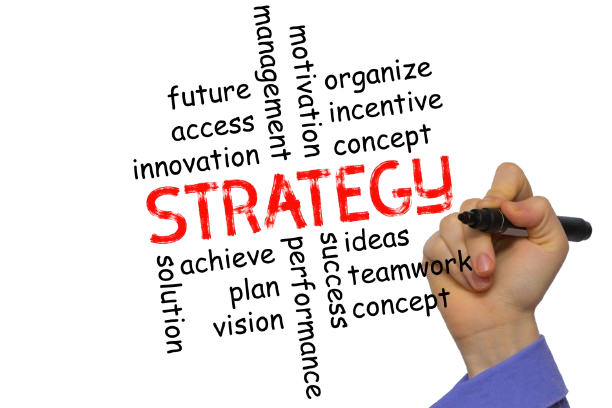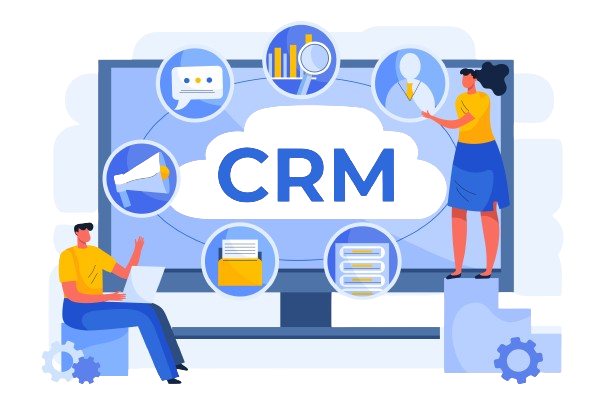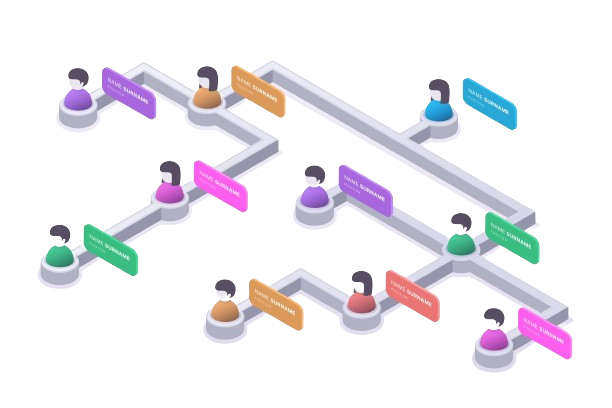
CRM strategy business approach that leverages technology to manage interactions with customers. It involves the systematic organization, automation, and synchronization of sales, marketing, and customer service processes. Free CRM software plays a pivotal role in enhancing customer satisfaction and loyalty by providing businesses with a comprehensive view of customer interactions and preferences. This enables personalized communication, efficient issue resolution, and the delivery of tailored services, fostering long-term relationships.
From a business perspective, CRM is indispensable for optimizing sales processes, improving communication and collaboration across departments, and driving data-driven decision-making. By utilizing CRM systems, companies can segment their customer base, leading to targeted marketing campaigns and more effective promotions. The insights derived from CRM analytics empower businesses to make informed decisions, adapt strategies to changing market conditions, and gain a competitive edge. Ultimately, CRM supports scalability, allowing organizations to grow while maintaining a customer-centric focus and delivering superior experiences that set them apart in the marketplace.
Having a smart CRM strategy to deal with different business aspects really helps your brand. A well-crafted strategy not only enhances brand visibility but also establishes a robust foundation for sustained success. It enables your brand to navigate the complexities of the market with agility, ensuring it remains relevant and resonates with your target audience.
A carefully developed CRM strategy contributes to brand consistency, fostering a cohesive and recognizable identity across various touchpoints. Moreover, it strengthens customer trust and loyalty by aligning your brand values with consumer expectations. Get ready to learn why it makes such a difference and how to create a CRM strategy that works for your business, allowing you to unlock the complete potential of your business.
Importance of CRM Strategies

Customer Relationship Management (CRM) strategies hold significant importance for businesses across various industries. At the core, these strategies focus on building and maintaining strong connections with customers, and their impact extends across several key areas:
- Customer Retention: CRM strategies are instrumental in retaining existing customers. By understanding their needs and preferences, businesses can provide personalized experiences, fostering loyalty and reducing customer churn.
- Improved Customer Satisfaction: Through the effective use of CRM, companies can enhance customer satisfaction by streamlining communication, resolving issues promptly, and tailoring products or services to meet specific customer demands.
- Data-Driven Decision-Making: CRM systems accumulate a wealth of customer data. Analyzing this data provides valuable insights into customer behavior, allowing businesses to make informed decisions regarding product development, marketing strategies, and overall business planning.
- Enhanced Communication and Collaboration: CRM promotes seamless communication and collaboration among different departments within a company. This ensures that all teams are well-informed about customer interactions, leading to a more coordinated and customer-centric approach.
- Targeted Marketing Campaigns: By segmenting customers based on their preferences and behavior, CRM strategies enable targeted marketing campaigns. This ensures that marketing efforts are focused on the right audience, leading to improved campaign effectiveness and higher conversion rates.
- Sales Process Optimization: CRM systems help optimize the sales process by providing insights into customer needs and behaviors. This results in more effective sales strategies, shorter sales cycles, and increased revenue.
- Competitive Advantage: Companies that implement CRM strategies gain a competitive edge by offering superior customer experiences. The ability to understand and fulfill customer needs sets these businesses apart in the market, attracting and retaining a loyal customer base.
- Scalability and Adaptability: CRM strategies are designed to scale with business growth. As a company expands, its CRM system can adapt to handle increased data and interactions, ensuring continued efficiency in managing customer relationships.
Implementing effective CRM strategies is essential for businesses seeking to thrive and succeed in the long term.
6 Steps to Creating a Successful CRM Strategy
Crafting an effective CRM strategy is integral to sustained success. Let’s explore the essential steps that businesses need to undertake to create a successful CRM strategy. As the heartbeat of customer-centric operations, a well-designed CRM strategy not only enhances customer satisfaction but also drives business growth. In this section, we’ll discuss 6 key steps that will empower your organization to build and implement a CRM strategy that resonates with your unique goals, maximizes customer engagement, and ultimately propels your business forward.
1. Define Goals: Understanding the Foundation of Your CRM Strategy

Defining clear and achievable goals is the foundational step in crafting an effective Customer Relationship Management (CRM) strategy. This stage involves a comprehensive evaluation of what your organization aims to achieve through the implementation of CRM. Here’s a detailed exploration of this crucial step:
- Identifying Business Objectives: Begin by aligning CRM goals with broader business objectives. Whether it’s improving customer retention, boosting sales, or enhancing overall customer satisfaction, establishing a direct link between CRM initiatives and business goals is paramount.
- Setting Measurable Targets: Clearly articulate specific, measurable, achievable, relevant, and time-bound (SMART) goals. For instance, rather than a vague objective like “improve customer satisfaction,” define a precise target, such as “increase customer satisfaction scores by 15% within the next quarter.”
- Understanding Customer Needs: Tailor your goals to address the unique needs and expectations of your customer base. Consider factors such as customer preferences, pain points, and feedback to ensure that your CRM objectives are directly aligned with delivering an enhanced customer experience.
- Segmenting Goals for Different Departments: Acknowledge that various departments within your organization may have distinct goals tied to CRM. Sales, marketing, and customer service, for example, may have specific targets. Ensure that these goals are interconnected and contribute to the overarching success of the CRM strategy.
- Long-Term vs. Short-Term Goals: Differentiate between long-term strategic goals and short-term tactical goals. While long-term goals may include establishing lasting customer relationships, short-term goals could focus on immediate improvements in sales conversion rates.
- Gaining Stakeholder Input: Involve key stakeholders in the goal-setting process. This ensures that the CRM strategy aligns with the broader vision of the organization and receives support from decision-makers, fostering a more cohesive and collaborative approach.
By meticulously defining your goals at the outset, you provide a clear direction for the subsequent stages of your CRM strategy. These goals serve as benchmarks for success, guiding the implementation and continuous refinement of your CRM initiatives to meet the evolving needs of both your business and your valued customers.
2. Create Profiles or Personas for Target Customers
![]()
Creating profiles or personas for target customers is an important step in a comprehensive CRM strategy. This process involves developing detailed and semi-fictional representations of your ideal customers based on market research, customer data, and insights. These profiles go beyond basic demographics and delve into the intricacies of customer behaviors, preferences, and pain points. Here’s a detailed breakdown of why and how this step is crucial:
- Understanding Customer Needs: Creating customer profiles allows businesses to gain a deeper understanding of their target audience’s needs. By identifying customer pain points, preferences, and expectations, companies can tailor their products, services, and communication strategies to better meet those needs.
- Personalized Marketing and Communication: Personas enable businesses to craft personalized marketing messages and communication strategies. When companies speak directly to the needs and interests of specific customer segments, it enhances the relevance of their messaging, fostering stronger connections with the audience.
- Segmentation for Targeted Campaigns: Personas facilitate the segmentation of the customer base. By categorizing customers into distinct personas, businesses can design targeted marketing campaigns that resonate with specific groups. This ensures that promotional efforts are more effective and efficient.
- Product and Service Tailoring: Armed with detailed customer profiles, businesses can refine and customize their products and services to align with customer expectations. This level of tailoring enhances customer satisfaction and loyalty, as offerings are better aligned with the preferences of the target audience.
- Improved Customer Engagement: Knowing the personas of target customers allows for more meaningful and relevant engagement. Whether through customer support, marketing initiatives, or product development, aligning strategies with customer personas enhances the overall customer experience and strengthens the customer-business relationship.
- Data-Driven Decision-Making: Personas are built on data, and the process of creating them often involves analyzing customer data and market research. This data-driven approach ensures that strategic decisions are grounded in a comprehensive understanding of the target audience, minimizing guesswork and maximizing the effectiveness of business strategies.
- Adaptability and Evolution: Customer profiles are not static. As the market evolves and customer behaviors change, businesses can adapt their personas accordingly. Regularly updating and refining customer profiles allows organizations to stay agile and responsive to shifting market dynamics.
Creating profiles or personas for target customers is a foundational step in a CRM strategy, providing businesses with the insights needed to tailor their products, services, and communication to effectively meet customer expectations.
3. Map Out the Customer Journey

Mapping out the customer journey is a crucial aspect of a comprehensive CRM strategy. This step involves creating a visual representation of the various touchpoints and interactions a customer has with a business throughout their entire lifecycle, from initial awareness to post-purchase engagement and beyond.
- Identifying Touchpoints: Begin by identifying all the touchpoints where customers interact with your brand. These could include website visits, social media engagement, customer service interactions, and product purchases.
- Understanding Customer Interactions: Analyze each touchpoint to gain a deep understanding of how customers interact with your business at different stages. This involves recognizing the channels they use, the information they seek, and the challenges they may encounter.
- Creating Personas: Develop customer personas based on common characteristics and behaviors observed during the journey mapping process. Personas represent fictional characters that embody specific customer segments, helping in tailoring strategies to better meet their needs.
- Aligning with Customer Goals: Align the customer journey map with customer goals and expectations. This ensures that every interaction is designed to contribute positively to the overall customer experience and satisfaction.
- Spotting Pain Points and Opportunities: Identify pain points or challenges customers may face during their journey. Simultaneously, pinpoint opportunities where the business can add value or exceed customer expectations. This information is crucial for refining processes and enhancing the overall customer experience.
- Integrating Data: Utilize CRM software to integrate data collected at each touchpoint. This centralizes customer information, enabling a holistic view of the customer journey. Integrated data facilitates personalized communication and a seamless transition between different stages of the journey.
- Continuous Monitoring and Adjustment: Recognize that the customer journey is dynamic, and influenced by market trends and customer behaviors. Regularly monitor and update the journey map to reflect changes in customer expectations, market conditions, or technological advancements.
- Collaboration Across Departments: Ensure collaboration among different departments, such as marketing, sales, and customer service, based on the insights gathered from the customer journey map. This collaboration ensures a unified approach to customer interactions and enhances the overall customer experience.
- Measuring Success Metrics: Establish key performance indicators (KPIs) to measure the success of the customer journey strategy. These metrics could include customer satisfaction scores, conversion rates, and customer retention rates, providing tangible insights into the effectiveness of the mapped-out journey.
Mapping empowers businesses to proactively address customer needs, optimize interactions, and build lasting relationships, making it a fundamental component of a successful CRM strategy.
4. Optimize Use of CRM Software

Optimizing the use of CRM software is a pivotal step in the overall CRM strategy, focusing on extracting the maximum value from the technology adopted by the organization. Here’s a detailed exploration of this crucial aspect:
- Selecting the Right CRM Software: Begin by ensuring that the CRM software aligns seamlessly with the organization’s needs and objectives. Consider factors such as scalability, customization capabilities, integration with existing systems, and user-friendliness. The chosen software should cater to the specific requirements of the business and industry.
- Customization and Configuration: Tailor the CRM software to meet the unique workflows and processes of the organization. This involves configuring the software to capture and track relevant data points, creating customized fields, and adapting the user interface to streamline operations. A well-customized CRM system enhances user adoption and ensures that it aligns closely with the organization’s business processes.
- Data Quality and Maintenance: Optimal use of CRM software hinges on the quality of the data it houses. Implement data quality standards and conduct regular audits to ensure accuracy. Establish protocols for data entry and update procedures, preventing duplicate entries and maintaining the integrity of customer information. Clean and accurate data is fundamental for meaningful analytics and informed decision-making.
- Integration with Other Systems: Foster a cohesive digital ecosystem by integrating the CRM software with other essential business systems. This might include integrating with marketing automation platforms, ERP systems, or communication tools. Seamless integration ensures a unified view of customer interactions across departments, enhancing collaboration and efficiency.
- User Training and Adoption: Invest in comprehensive training programs to familiarize users with the CRM software’s features and functionalities. User adoption is critical for realizing the full potential of the CRM system. Educate teams on data input best practices, reporting capabilities, and how to leverage the software to enhance their specific roles.
- Automation and Workflow Optimization: Leverage the automation capabilities of the CRM software to streamline routine tasks and workflows. This not only reduces manual effort but also minimizes errors and ensures consistency in processes. Identify repetitive tasks that can be automated, such as email responses, lead nurturing, or follow-up reminders.
- Regular Evaluation and Updates: Periodically assess the performance and relevance of the CRM software. Stay informed about updates, patches, and new features provided by the software provider. Regularly review the organization’s evolving needs and adjust the CRM configuration accordingly. This iterative process ensures that the CRM strategy remains aligned with the dynamic nature of the business environment.
By diligently optimizing the use of CRM software through these key considerations, organizations can harness the full potential of their technological investment, leading to improved operational efficiency, enhanced customer relationships, and ultimately, a more successful CRM strategy.
5. Tap into Automation

“Tapping into Automation” within a CRM strategy involves leveraging automated processes and technologies to streamline various aspects of customer relationship management. Automation can significantly enhance efficiency, reduce manual efforts, and ensure consistency in interactions with customers. Here’s a detailed exploration of this crucial element in CRM strategy:
- Automating Repetitive Tasks: One of the primary benefits of automation is the ability to handle routine and repetitive tasks, such as data entry, lead assignment, and follow-up emails. By automating these processes, businesses can free up valuable time for their teams to focus on more complex and strategic aspects of customer engagement.
- Lead Nurturing and Scoring: Automation plays a key role in lead nurturing, where predefined workflows guide leads through the sales funnel. This involves sending targeted and timely content to prospects, assessing their engagement, and assigning scores based on their interactions. Automated lead scoring helps prioritize leads and ensures sales teams focus on the most promising opportunities.
- Personalized Communication: Automation enables the delivery of personalized communication at scale. By segmenting customer data, businesses can create targeted messaging that resonates with specific audience segments. Whether it’s personalized emails, product recommendations, or promotional offers, automation ensures that customers receive content tailored to their preferences and behaviors.
- Customer Onboarding and Engagement: Automation is valuable during the onboarding process, ensuring that new customers receive a seamless and consistent experience. Automated welcome emails, tutorials, and follow-up communications can enhance customer engagement from the outset, laying the foundation for a positive and lasting relationship.
- Workflow Automation: Workflow automation involves defining and automating the sequence of steps involved in various business processes. This can include order processing, support ticket resolution, and customer feedback collection. Automated workflows enhance efficiency, reduce errors, and contribute to a more streamlined operation.
- Data Synchronization: Automation helps in keeping customer data synchronized across different systems and platforms. Whether it’s updating contact information, tracking customer interactions, or managing sales activities, automated data synchronization ensures that information is accurate and up-to-date, providing a holistic view of each customer.
- Performance Monitoring and Reporting: Automated tools can generate real-time reports and analytics, providing insights into the performance of various CRM activities. This data-driven approach allows businesses to continuously refine and optimize their strategies based on measurable outcomes.
- Scalability and Consistency: As businesses grow, automation ensures scalability by handling increased volumes of data and customer interactions without a proportional increase in manual effort. This scalability contributes to maintaining consistent and high-quality customer experiences, even as the customer base expands.
Tapping into automation is a pivotal step toward creating a dynamic and responsive CRM ecosystem that adapts to the evolving needs of both the business and its customers.
6. Leverage the Data

Leveraging data is a pivotal step within a comprehensive CRM strategy, as it involves harnessing the valuable information collected about customers to inform and enhance various aspects of business operations. This step encompasses several key elements:
- Data Collection: The first aspect involves systematically collecting relevant customer data. This information could include contact details, purchase history, preferences, interactions with the company, and any other pertinent data points. It’s essential to utilize various channels and touchpoints to gather a comprehensive dataset.
- Data Integration: Once collected, the data needs to be integrated into a centralized CRM system. This ensures that all departments within the organization have access to a unified and up-to-date view of customer information. Integration allows for a seamless flow of data, facilitating more informed decision-making across the entire business.
- Data Analysis: Analyzing the collected data is a critical component. By employing analytical tools and techniques, businesses can derive meaningful insights into customer behavior, preferences, and trends. This analysis informs strategic decision-making, such as targeted marketing campaigns, personalized customer interactions, and product/service improvements.
- Personalization: Leveraging data enables businesses to personalize their interactions with customers. By understanding individual preferences and purchase histories, companies can tailor their communication and offerings, creating a more engaging and relevant experience for customers.
- Predictive Analytics: Advanced CRM strategies leverage predictive analytics to forecast future customer behavior. By identifying patterns in historical data, businesses can anticipate customer needs, enabling proactive rather than reactive engagement. This can significantly enhance the effectiveness of marketing and sales efforts.
- Continuous Improvement: The process of leveraging data is iterative. Businesses should continuously assess and refine their strategies based on ongoing data analysis. This includes adapting to changing customer behaviors, identifying emerging trends, and optimizing approaches to ensure sustained relevance and effectiveness.
By tapping into the wealth of information available, organizations can strengthen customer relationships, drive operational efficiency, and gain a competitive edge.
Key Takeaways
Once all the elements are arranged, prepare to launch your initiatives. Confirm that everyone is aligned with the objectives and possesses a comprehensive understanding of the goals. Foster collaboration among team members, and consistently evaluate whether adjustments are required. Maintain focus on your objectives, and your dedicated efforts will yield positive outcomes.
A well-structured CRM approach holds immense potential for a business, contributing not only to revenue growth but also to the development of an exceptional customer experience. Implementing a strategic plan allows you to genuinely cater to your customers’ needs, opening up new avenues for business expansion that were previously untapped.